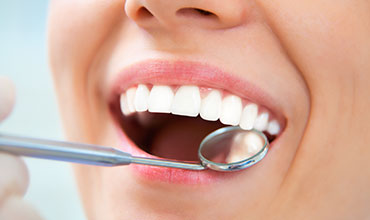Oral Hygiene Aids

Your smile depends on simple dental care habits, such as brushing and flossing. But are you using the right techniques? Follow these steps to protect your oral health.
Brushing for oral health
Oral health begins with clean teeth. Keeping the area where your teeth meet your gums clean can prevent gum disease, while keeping your tooth surfaces clean can help you stave off cavities. Consider these brushing basics from the American Dental Association:
- Brush your teeth at least twice a day. When you brush, don't rush. Take enough time to do a thorough job.
- Use the proper equipment. Use a fluoride toothpaste and a soft-bristled toothbrush that fits your mouth comfortably. Consider using an electric or battery-operated toothbrush, which can reduce plaque and a mild form of gum disease (gingivitis) more than does manual brushing. These devices are also helpful if you have arthritis or other problems that make it difficult to brush effectively.
- Practice good technique. Hold your toothbrush at a slight angle — aiming the bristles toward the area where your tooth meets your gum. Gently brush with short back-and-forth motions. Remember to brush the outside, inside and chewing surfaces of your teeth, as well as your tongue.
- Keep your equipment clean. Always rinse your toothbrush with water after brushing. Store your toothbrush in an upright position, if possible, and allow it to air-dry until using it again. Don't routinely cover toothbrushes or store them in closed containers, which can encourage the growth of bacteria.
- Know when to replace your toothbrush. Invest in a new toothbrush or a replacement head for your electric or battery-operated toothbrush every three to four months — or sooner if the bristles become frayed.
Flossing for oral health
You can't reach the tight spaces between your teeth and under the gumline with a toothbrush. That's why daily flossing is important. When you floss:
- Don't skimp. Break off about 18 inches (46 centimeters) of dental floss. Wind most of the floss around the middle finger on one hand, and the rest around the middle finger on the other hand. Grip the floss tightly between your thumbs and forefingers.
- Be gentle. Guide the floss between your teeth using a rubbing motion. Don't snap the floss into your gums. When the floss reaches your gumline, curve it against one tooth.
- Take it one tooth at a time. Slide the floss into the space between your gum and tooth. Use the floss to gently rub the side of the tooth in an up-and-down motion. Unwind fresh floss as you progress to the rest of your teeth.
- Keep it up. If you find it hard to handle floss, use an interdental cleaner — such as a special wooden or plastic pick, stick or brush designed to clean between the teeth.
As long as you do a thorough job, it doesn't matter if you brush or floss first. However, flossing before brushing might allow more fluoride from your toothpaste to reach between your teeth.
In addition to daily brushing and flossing, consider using an antimicrobial mouth rinse or a mouth rinse containing fluoride to promote oral health.
To remove food particles from your teeth that aren't dislodged by flossing or brushing, you might try an oral irrigator — a device that aims a stream of water at your teeth. Resist the temptation to use toothpicks or other objects that could injure your gums. Keep in mind, however, that an oral irrigator doesn't replace daily brushing and flossing, since it doesn't remove plaque.
